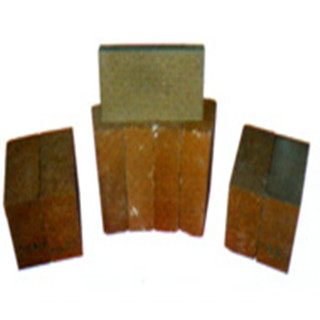Refractory bricks are inorganic non-metallic materials with a refractoriness of not less than 1580 °C, and are the basic materials for high-temperature technology. Magnesia-chrome bricks are structural materials for thermal equipment such as masonry kilns. Functional material for its special role. The successful use of refractory bricks under the action of high temperature must have good organizational structure, thermal properties, mechanical properties and performance, that is, high refractoriness, softening temperature under load, thermal shock resistance and chemical corrosion resistance. Withstand various physical and chemical changes and mechanical effects, and meet the requirements of thermal equipment and components.
The reasons why refractory bricks can withstand high temperature are as follows;
One from raw material analysis
The raw materials used in the production of refractory bricks are generally natural ores, such as bauxite, silica, magnesite and other raw materials after processing. There are three types of refractory bricks.
When using bauxite as raw material to produce aluminum-silicon refractory bricks, its main component is alumina, which is hydrated alumina containing impurities. solution. It is mainly used for aluminum smelting and making refractory materials, because the refractoriness of high alumina bauxite clinker is as high as 1780 ℃, with strong chemical stability and good physical properties. Ultra-high temperature refractory brick fused zirconium corundum brick can be produced by purifying bauxite at high temperature to produce a corundum main crystal phase with alumina content greater than 90%.

The raw material for making siliceous refractory bricks is silica, and the main component is SiO2. The higher the content, the higher the refractoriness. Harmful impurities are Al2O3, K2O, Na2O, etc. Silica bricks are made of natural silica as raw material, plus an appropriate amount of mineralizer to promote the transformation of quartz in the green body into tridymite. It is slowly fired at 1350~1430℃ in a reducing atmosphere. Has high high temperature strength. The softening temperature under load is 1620℃.
Magnesite is the main raw material for making magnesia refractory bricks. Its basic component is MgO, and magnesia has high refractory insulation properties. It can be converted into crystals by burning at a high temperature above 1000 °C, and it can be sintered magnesia when it rises to 1500-2000 °C. After being crushed to a certain particle size or powder, it can be made into magnesia brick or magnesia ramming material. Alkaline refractory bricks have strong resistance to alkaline slag, but cannot resist the erosion of acid slag. The refractoriness is above 2000 °C, but its softening point under load is only 1500 °C, and the thermal shock stability is poor.
2. It belongs to inorganic non-metallic materials
Inorganic non-metallic materials, organic polymer materials and metal materials are listed as the three major materials. The characteristics of ordinary inorganic non-metallic materials are: high compressive strength, high hardness, high temperature resistance, and corrosion resistance. It has excellent characteristics in heat and heat insulation performance, which are incomparable to metal materials and polymer materials. However, compared with metal materials, it has low breaking strength and lacks ductility. Compared with polymer materials, the density is larger and the manufacturing process is complicated.
3. Forming and sintering
The production process of refractory bricks is a process of mineral crushing-raw material mixing-mechanical forming-high temperature firing to produce a product that resists high temperature. The sintering temperature of the green body in the high temperature tunnel kiln will be higher than the load softening of the product. The temperature, the general sintering temperature is above 1500 ℃. The refractoriness is above 1770℃. High temperature resistance is good. Refractory bricks are mainly used for the lining of kilns such as steelmaking electric furnaces, glass melting furnaces, and cement rotary furnaces.
To sum up, the three reasons why refractory bricks can resist high temperature are mainly based on: ① the raw materials used in refractory bricks have high refractoriness; ② as inorganic non-metallic materials, the level of use is determined from the level of raw materials; ③ the finished body is used in high-temperature tunnels The kiln passes through high temperature above 1500℃, so the refractory brick can resist high temperature and is suitable for high temperature kiln lining.